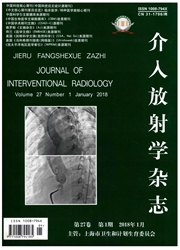

 中文摘要:
中文摘要:
目的探讨人血栓调节蛋白(hTM)基因转染兔内皮祖细胞(EPCs)的可行性及效率,为hTM修饰的EPCs活体移植预防经皮腔内血管成形术术后血管内再狭窄提供实验依据。方法采用基因工程方法构建重组质粒pcDNA3.1-hTM。梯度离心法分离兔外周血单个核细胞(MNCs),贴壁筛选出EPCs,通过免疫组化检测其CD3g、vWF、KDR等内皮系抗原,通过Dil-ac—LDL及FITC—UEA-1荧光染料双吞实验进一步表征EPCspcDNA3.1-hTM转染EPCs,转染48h后行细胞免疫荧光染色,72h后行Western印迹检测比较重组质粒转染组、空载质粒转染组和对照组hTM表达水平。转染后分别于第3、4、5天采用四氮噻唑蓝法(M’Irr)比较各组细胞增殖活性。结果双酶切及基因测序鉴定均证实pcDNA3.1.hTM重组质粒构建成功:细胞表面抗原及免疫荧光双标实验表明所培养细胞为EPCs。转染后的直接免疫荧光实验及Western印迹检测证实hTM在重组质粒转染组的表达高于对照组;MTY比色实验示重组质粒转染组、空载质粒组、空白对照组在第3、4、5天吸光度值差异无统计学意义(P〉0.05)。结论成功构建pcDNA3.1.hTM重组质粒,转染兔外周血EPCs后可使EPCs成功表达TM,且对EPCs的活力、增殖等生物学性质无明显影响。
 英文摘要:
英文摘要:
Objective To explore the feasibility and efficiency of transfecting human thrombomodulin (hTM) gene into rabbit's endothelial progenitor cells (EPCs) in order to provide experimental evidence for further animal experiments. Methods The eukaryotic expression plasmid of hTM gene was constructed. Rabbit's peripheral blood mononuclear cells (MNCs) were isolated. EPCs were isolated from the MNCs by adherence method, which were expanded and characterized by CD34, KDR, vWF, Dil- ae- LDL, FITC- UEA- 1, and then modified with hTM by using X- tremeGENE HP DNA Transfection Reagent. Direct immunofluorescence was performed to observe hTM expression after 48 hours, and the expression of hTM was detected by Western blot after 72 hours. MTT assay was used to evaluate cell survival and proliferation. Results The recombinant hTM with recombinant plasmid was confirmed by double endonuclease digesting and sequencing. EPCs were characterized by being positive for the endothelial cellmarks of CD34, KDR, vWF and internalization of DiI- Ac- LDL and binding to FITC- UEA- I. The gene expression was significantly improved in the pcDNA3.1- hTM group compared to control group as demonstrated by direct immunofluorescence and Western Blot analysis. The difference of survival rate was not significant among pcDNA3.1- hTM group, pcDNA3.1 (+)- neo group and untransfected group through MTF analysis. Conclusion The recombinant plasmid of pcDNA3.1 -hTM can be successfully and effectively transfected into rabbit's peripheral blood EPCs by using X-tremeGENE HP DNA Transfection Reagent, and the transfection causes no significant changes in viability and proliferation capacity of EPCs. (J Intervent Radio1, 2013, 22: 750-755)
 同期刊论文项目
同期刊论文项目
 同项目期刊论文
同项目期刊论文
 期刊信息
期刊信息
